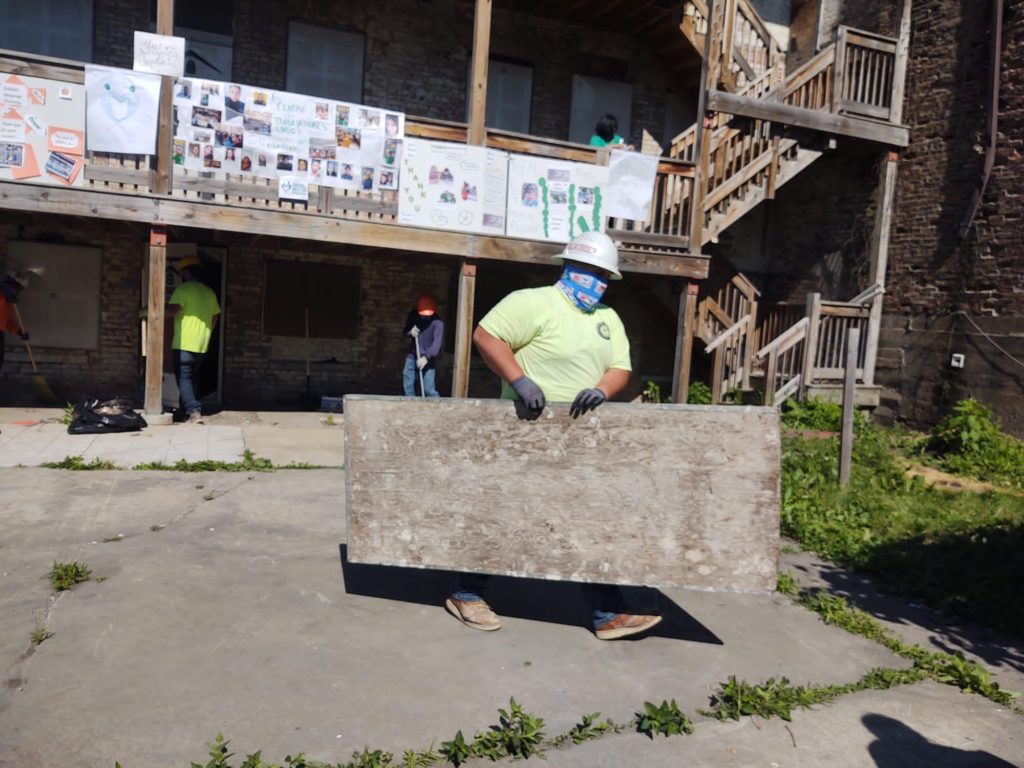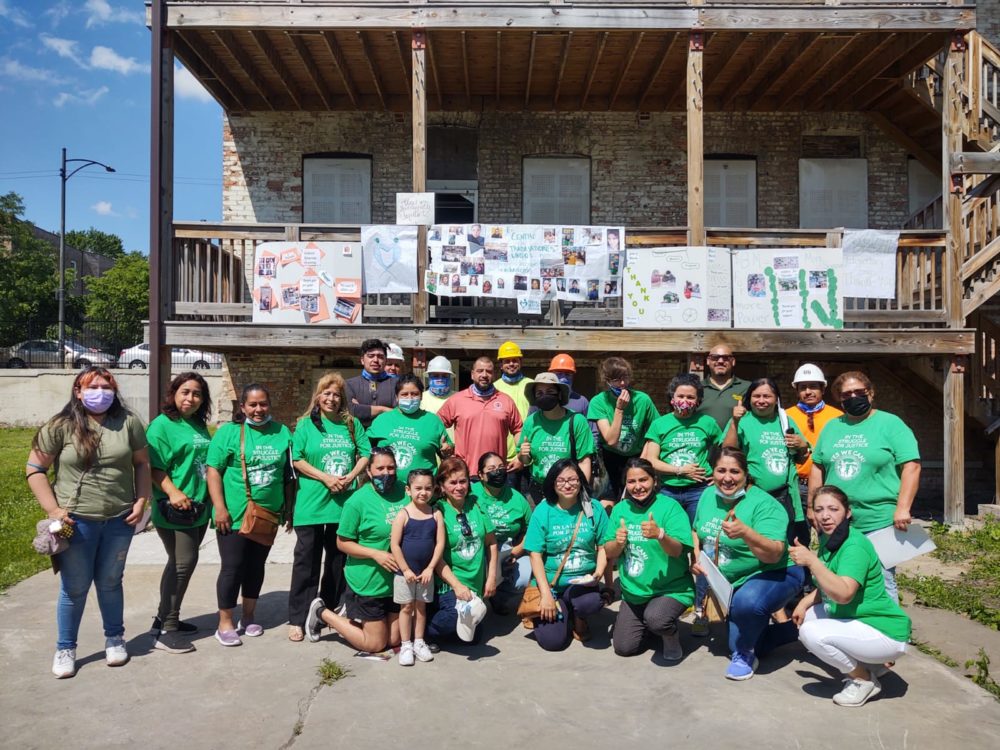The far Southeast Side of Chicago, once a clout-heavy working-class stronghold whose steel mills fed and furnished neighborhoods like Hegewisch and South Deering, has become something of a forgotten quarter. Far removed from the massive development projects that many other communities of the city are seeing, Chicago’s Southeast Side has languished since the collapse of the area’s manufacturing industry in the 1970’s. Once a heavily Polish community, many of the areas’ Spanish-speaking immigrants lack access to resources that other gateway communities like Little Village or Uptown can tap into.
Ana Guajardo, founder of Centro de Trabajadores Unidos (CTU), aims to change all that. A native of the Southeast Side and the daughter of a thirty-seven-year veteran of an area steel mill, she bluntly assesses the loss of vibrancy that accompanied the demise of the community’s main economic engine. “Here’s the thing: old-school South Siders have this pride of their community, and a lot of it comes from when they were younger, there was a sense of family, and everyone knew each other. Now, it’s very disconnected. Back then, there was a sense of belonging. Especially with the churches, people were very active. On Commercial Ave., it was packed. Now, instead of going to Mom and Pop shops, people go to Walmart and Target. A lot of the people who grew up have left.”
Centro de Trabajadores Unidos serves as a knowledge and resource hub for immigrant and socially marginalized communities on the Southeast Side, and increasingly in the south suburbs. Chicago’s role as an economic powerhouse has long translated into ample employment opportunities for new arrivals to our midwestern shores, but this doesn’t always result in equitable treatment or access to much needed resources. None of this is lost on Guajardo. “There is not enough investment in our communities,” she notes. “The Southeast Side has the most dumps and landfills in the city. When the steel plants started closing and leaving, there was no investment and no attention. The focus was Hyde Park and downtown.”
She added that the loss of jobs led to a rise in crime and mental health issues. “There is only one mental health professional in 60617, and none in Hegewisch. But on the North Side, there are myriad choices. The south suburbs are even worse–there are no agencies or nonprofits. In Calumet City, there aren’t even meeting halls for nonprofits to meet in.”
When Guajardo first started the organization in 2008, a lot of her early work was on making sure that immigrant workers weren’t being taken advantage of by employers. She talks of cases where immigrants were being paid $3 an hour. Some of those companies were immigrant-owned.
Today, the Centro is making inroads in a variety of ways. With the expanded array of programs comes a need for more space, and so the center is breaking ground on a new workspace. Formerly housed in the basement of Our Lady of Guadalupe church in South Chicago, the new building will include a community center that can host leadership training workshops, citizenship classes. Though the project for the new building was originally greenlighted in 2014, construction was delayed after former Governor Bruce Rauner cut funding. With the assistance of local grassroots organizations and labor unions, the Illinois Department of Commerce and others, things are underway again.
Another show of progress is the Community Navigator Committee, which trains people to become community navigators and be on the alert for illegal Immigration and Customs Enforcement (ICE) practices. Another common danger is that immigrants facing deportation of immigrants who have loved ones in the deportation system are sometimes fleeced by scammers posing as immigration lawyers. The Community Navigators Committee recently received a referral for a Deferred Action for Childhood Arrivals (DACA) applicant who didn’t hear back for years after applying, so they worked with his attorney to send legal requests for a response to his application. Then, when his application was denied, the community navigators investigated why.
They discovered he was ineligible for DACA because he hadn’t completed high school and was listed in the Chicago Police Department’s (CPD) gang database. His inclusion in the gang database was based a tattoo.Immigrants facing deportation did not have a right to a government-appointed attorney until August, when Governor JB Pritzer signed a law that would allow the Cook County Public Defender to represent immigrants in the Chicago immigration court, the community navigators supported him with legal representation. (As of press time his deportation case is still pending.)
Chicago’s infamous gang database affects many more people like him. The gang database is an opaque and seemingly arbitrary scarlet letter at CPD’s disposal. Ostensibly a method for keeping up with hardened gang members, the database has become deeply divisive and controversial. The Chicago Office of Inspector General audited the gang database in 2019 and found it constituted a “deeply flawed collection of gang data, with poor quality controls and inadequate protections for procedural rights.” The audit uncovered more than 135,000 names in the database, and the vast majority of those included were Latinx or African-American.
An added worry for immigrant neighborhoods like East Side is about building rapport with the school community, where many people have limited English fluency. In Chicago, where Chicago Public Schools (CPS) rules over a sprawling network of schools, support tools, local school councils, extracurricular programming, and having access to the corridors of influence is crucial. To address this, another one of the Centro’s grassroots initiatives is the Parent Mentor Program, which places parents in classrooms to assist parents with the granular components of a typical school environment. “Parent mentors check up on kids who aren’t coming to school, and it’s really great that they call home to find out why a child isn’t in school on a particular day,” said Claudia Sumuano, an enthusiastic parent mentor and mother to an area charter-school student.. “This helps parents feel like someone cares about them.”

Sumuano, who works with preschoolers, kindergarteners, and first graders, is often the only Spanish-speaking adult present who can help. Despite being located on the Southeast Side, she said Gallistel Language Academy doesn’t have a bilingual teacher or teacher’s assistant present in each classroom. She said the Parent Mentor Program holds meetings and workshops to inform parents about the programs in the center and in the community. “An example is a program about sexual abuse and workplace accidents that I learned about through participating in the program of community navigators,” she said. “It teaches us that it doesn’t matter if we are immigrants, we still have rights in the workplace.”
Sumuano notes how proud her kids are to see her in school. “I work one to one with the students who need extra help with homework or classwork. I can pull them out of class. I also organize the classroom supplies, like the books and other materials.” So far the parent mentor program operates in four schools: Gallistel Language Academy, Douglas Taylor, John L. Marsh Elementary School, and Orville T Bright. Sumuano said she thinks many more schools could use the help of dedicated parents who want to invest themselves in their local school community.
The new building will allow the Centro to take on bold initiatives like a food incubator and industrial kitchen to house worker cooperatives. The upper floor will be transformed into temporary housing for newly arrived immigrant families.
The Centro is playing the latest part in Chicago’s long history of grassroots immigration activism and community service. The scale of growth for a newly formed organization is impressive, and effusive praise like that of Sumuano is revelatory: “I am very grateful for this program and I feel so thankful for the things they do for our community.”
James is a freelance writer and South Side native, and also the owner of a small travel company. He last wrote for the Weekly about a grocery-delivery app designed by a South Sider to mitigate food deserts.

